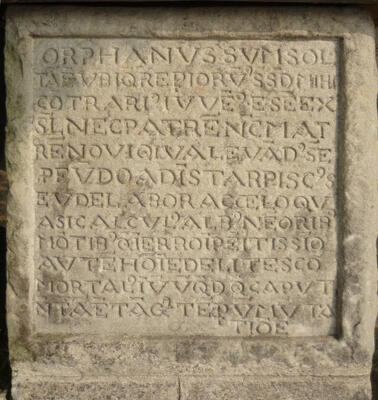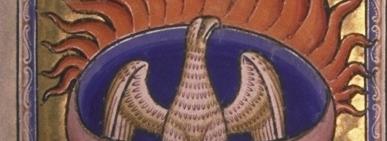
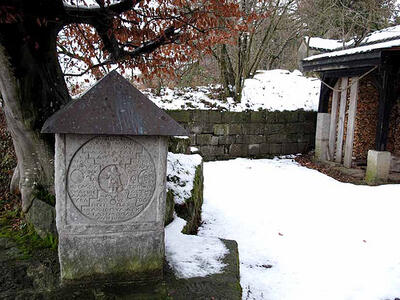
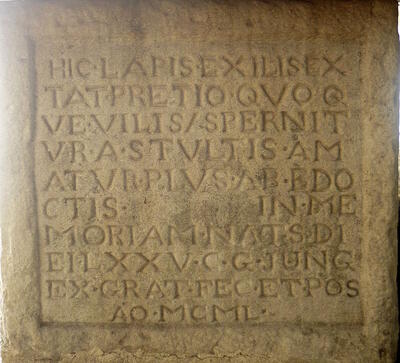
In 1950, on the occasion of his 75th birthday, Jung set up a stone cube on the lakeshore, just west of the tower, inscribing it on three sides. One side contains a quote of the Rosarium philosophorum, hic lapis exilis extat, pretio quoque vilis, spernitur a stultis, amatur plus ab edoctis ("this stone is poor, and cheap in price; it is disdained by fools, but it is loved all the more by the wise"), and the dedication IN MEMORIAM NAT[ivitati]S DIEI LXXV C G JUNG EX GRAT[itudine] FEC[it] ET POS[uit] A[nn]O MCML "in memory of his 75th birthday C.G. Jung out of gratitude made and set up [this stone], in the year 1950."
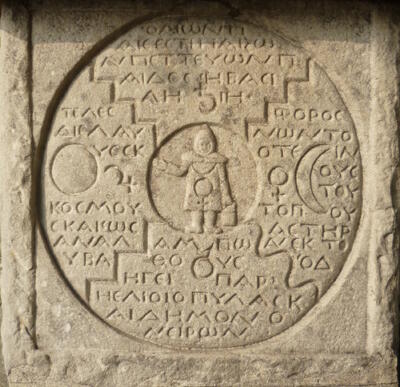
On the second side, Jung Telesphorus figure, a dwarf or homunculus bearing a lantern and wearing a hooded cape, surrounded by a Greek inscription. "Ὁ Αἰὼν παῖς ἐστι παίζων, πεττεύων· παιδὸς ἡ βασιληίη» · Τελεσφόρος διελαύνων τοὺς σκοτεινοὺς τοῦ κόσμου τόπους, καὶ ὡς ἀστὴρ ἀναλάμπων ἐκ τοῦ βάθους, ὁδηγεῖ «παρ' Ἠελίοιο πύλας καὶ δῆμον ὀνείρων".
The central figure is Homunculus-Mercurius-Telesphorus, wearing a hooded cape and carrying a lantern. He is surrounded by a quaternary Mandala of alchemical significance, with the top quarter dedicated to Saturn, the bottom quarter to Mars, the left quarter to Sol-Jupiter ("male") and the right quarter to Luna-Venus ("female"). The Greek inscription translates to approximately:
"Aion (Time, Eternity, the Eon) is a child at play, gambling; a child's is the kingship. Telesphorus ("the Accomplisher") traverses the dark places of the world, like a star flashing from the deep, leading the way to the Gates of the Sun and the Land of Dreams"
Time is a child at play, gambling; a child's is the kingship is a fragment attributed to Heraclitus.
To the Gates of the Sun and the Land of Dreams is a quote of the Odyssey (24.11), referring to Hermes the psychopomp leading the spirits of the slain suitors away.
